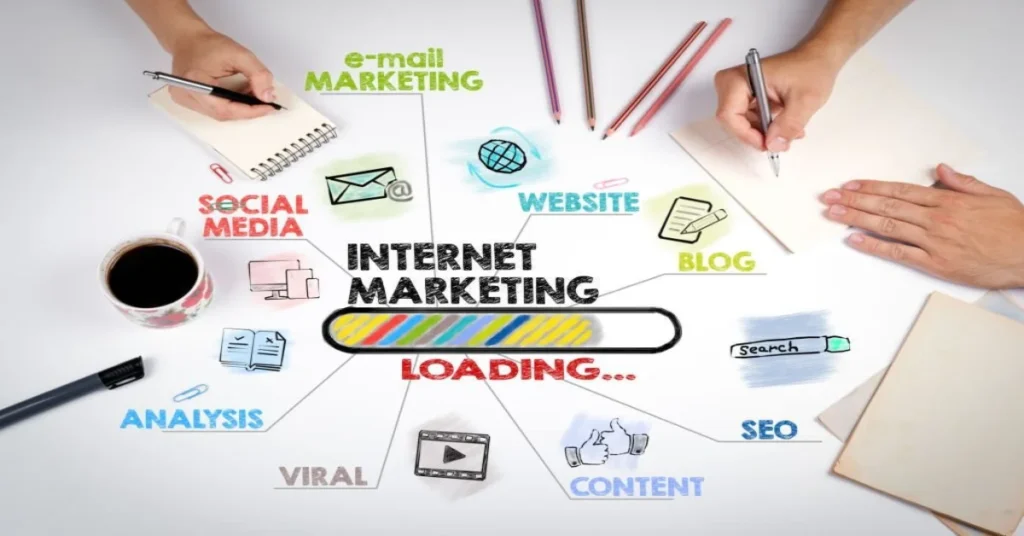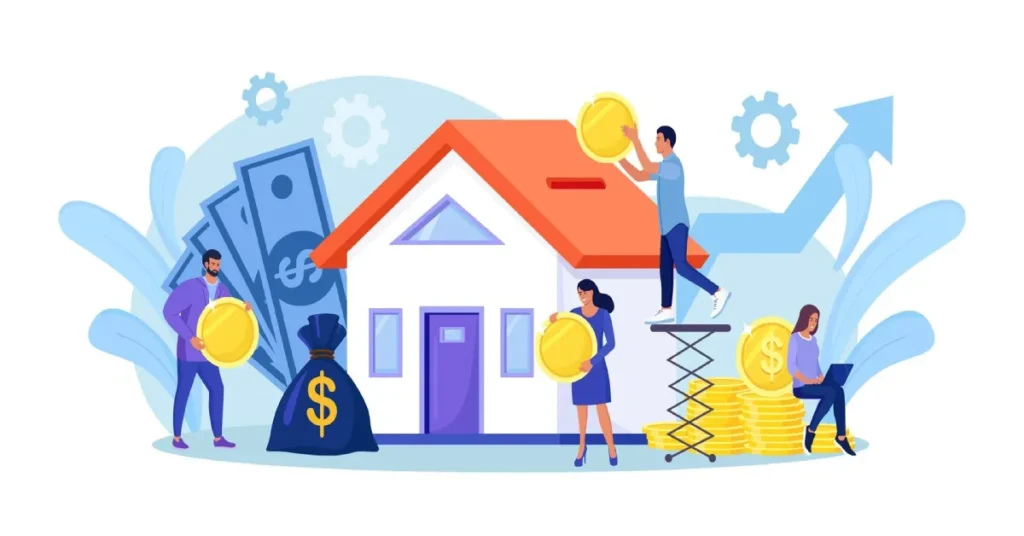Introduction
Building a strong lead acquisition strategy is crucial for any business seeking growth. It’s about more than just finding potential customers; it involves a thoughtful, strategic approach to connect with the right people at the right time. For businesses in the United States, this process carries unique considerations. We operate in a diverse market, with distinct consumer behaviors across regions, and a complex regulatory environment. Understanding these specific elements helps create lead acquisition plans that truly deliver results.
Let’s explore how to build a robust lead acquisition strategy that thrives in the US.
The Foundation of Lead Acquisition: Core Strategies

Before we dive into what makes lead acquisition unique in the US, let’s quickly review some core strategies. These are the building blocks.
- Content Marketing: You create valuable, relevant content to attract and engage your audience. This includes blog posts, videos, infographics, and e-books. For example, a software company might publish a guide on “Simplifying Project Management for Small US Businesses.” This approach helps establish your brand as an authority. Recent studies confirm its enduring power: 88% of marketers say content marketing improved their lead quality, according to a 2023 HubSpot report.
- Search Engine Optimization (SEO): You optimize your website and content to rank higher in search engine results. This means using the right keywords, having a fast, mobile-friendly site, and earning links from other reputable websites. When someone searches for “best financial advisor in New York,” you want your firm to appear high on the list.
- Paid Advertising: Platforms like Google Ads and social media ads let you target specific demographics and interests. You can show ads only to people in a particular city or those interested in a certain product. This brings immediate visibility.
- Email Marketing and Nurturing: You collect email addresses and send targeted messages to potential customers. This helps build relationships and guide leads through the sales funnel. Think of a personalized email series offering tips for first-time homebuyers after they download a mortgage guide.
- Social Media Marketing: You engage with your audience on platforms like LinkedIn, Facebook, and Instagram. This builds brand awareness and helps you connect directly with potential leads. Many businesses find success showcasing behind-the-scenes content or customer testimonials.
- Referral Programs: You encourage happy customers to spread the word about your business. Offering incentives for referrals can be a very cost-effective way to acquire new leads. This taps into existing trust.
Thinking Beyond the Standard Playbook: What’s Unique in the US?

Many articles discuss these general lead acquisition strategies. However, to truly excel in the United States, we need to look closer. What details might we be missing? What local flavors and legal considerations shape how these strategies perform here?
Regionalizing Your Lead Acquisition Efforts
The United States is a vast country, and what works in one state might not resonate in another. A uniform approach often overlooks significant differences in culture, economy, and consumer behavior.
- Tailoring Strategies for US Regions: Imagine trying to sell snow shovels in Florida with the same urgency you would in Minnesota. It just doesn’t make sense.
- Northeast: This region often values tradition and established networks. B2B lead acquisition might thrive through industry-specific events and high-value, research-backed content. Personal referrals carry strong weight.
- Southeast: Building relationships and community ties are very important here. Digital outreach that emphasizes local connection and a friendly, accessible tone performs well. Think about sponsoring local sports teams or community events.
- Midwest: Practicality and value often drive decisions. Direct sales approaches, clear messaging about ROI, and participation in specific industry trade shows are often very effective.
- Southwest/West Coast: This area tends to be more open to new technologies and innovative approaches. Online communities, early adoption of emerging platforms, and tech-driven solutions find a receptive audience. These regional differences are not just anecdotal. A 2020 study from UnboundB2B pointed out that even within “the West,” selling in the US versus Europe requires considering specific cultural and business behaviors.
- Hyperlocal SEO for Lead Generation: Generic SEO is good, but hyperlocal SEO is a game-changer for businesses targeting specific areas.
- Optimizing your Google Business Profile (GMB) is crucial. A complete GMB profile makes you 2.7 times more trustworthy to users, and 70% of consumer journeys start on Google, Google Maps, or YouTube. This means filling out every detail, posting regular updates, and actively managing reviews.
- Target local keywords like “best coffee shop in Seattle” or “plumber near me in Austin, TX.”
- Encourage local reviews. Businesses that respond thoughtfully to reviews earn more trust. 86% of consumers forgive negative reviews if businesses reply constructively. Think of a local bakery. They need to show up when someone searches “birthday cakes in Brooklyn,” not just “birthday cakes.”Video Marketing
- Community-Based Lead Acquisition (Offline and Hybrid): Even in our digital age, local connections drive leads.
- Joining your local Chamber of Commerce or business associations opens doors to networking and collaboration.
- Sponsoring local festivals, school events, or sports teams builds brand visibility and goodwill within a specific community. This can generate high-quality referrals.
- Hosting free local workshops or seminars provides direct value and positions your business as an expert. A financial advisor might host a “Retirement Planning for Seniors” workshop.
Navigating US Regulatory Waters: Compliance is Key
Lead acquisition in the United States demands careful attention to legal and privacy regulations. Failing to comply can lead to significant penalties and damage your brand’s reputation.
- Data Privacy Laws (CCPA/CPRA, etc.): We need to be aware of how we collect and use personal information.
- The California Consumer Privacy Act (CCPA) and the California Privacy Rights Act (CPRA) are significant. If your business interacts with California residents, these laws affect you, even if you are located elsewhere. They give consumers rights over their data, including the right to know what information companies collect, the right to request deletion, and the right to opt out of data sales or sharing. A single violation of CCPA can result in a $2,500 penalty, increasing to $7,500 for intentional violations.
- For healthcare businesses, HIPAA (Health Insurance Portability and Accountability Act) is critical. It protects sensitive patient health information. You must understand the difference between general contact information (non-PHI) and protected health information (PHI) to avoid serious legal issues. Patient records and medical history are PHI, while a name and email are typically not.
- Actionable Advice: Implement clear consent forms on your website. Be transparent about data usage in your privacy policy. Ensure you have systems to handle consumer data requests promptly. Regularly review your data collection practices.
- CAN-SPAM Act (Email Marketing): This federal law sets rules for commercial email. It applies even if recipients have consented to receive your emails.
- Key Requirements:
- Do not use false or misleading header information.
- Do not use deceptive subject lines.
- Identify the message as an advertisement.
- Include your valid physical postal address.
- Tell recipients how to opt out of future emails.
- Honor opt-out requests promptly (within 10 business days).
- Each email that violates CAN-SPAM can incur a fine of up to $51,743 (as of 2024, adjusted for inflation). You cannot sell or transfer email addresses of people who have opted out.
- Key Requirements:
- TCPA (Telephone Consumer Protection Act) for Telemarketing/SMS: This law regulates automated calls, text messages, and faxes.
- Key Requirements: You must have “prior express written consent” before sending automated calls or texts. This means a clear, unambiguous agreement.
- Maintain “Do Not Call” lists.
- Honor opt-out requests.
- The FCC has proposed changes to tighten consent rules for lead generation. Stay updated on these.
- Example: A compliant lead form for a solar energy company will clearly state that by submitting, the user agrees to receive calls and texts, potentially using automated technology, from the company and its partners, and that consent is not required for purchase.
Industry-Specific Lead Acquisition in the US Market
General strategies are a starting point. But each industry in the US has its own rhythm and unique challenges for lead acquisition.
- B2B SaaS (Software as a Service):
- US Nuance: This sector often thrives on rapid innovation and product-led growth. Many companies offer freemium models or free trials to attract users. Account-Based Marketing (ABM) is very effective for targeting large enterprise clients.
- Tactics: Webinars, detailed whitepapers, integration partnerships, and leveraging tech review sites like G2 and Capterra are strong lead acquisition channels. According to a 2025 HIVE Strategy report, one SaaS company saw a 272% increase in inbound demos by focusing on foundational content and conversion optimization.
- Healthcare:
- US Nuance: This industry faces strict regulations and a high need for patient trust.
- Tactics: Patient education content (e.g., articles on managing diabetes), online doctor directories, secure online appointment booking systems, and telehealth marketing are crucial. Patient referral networks are also very important.
- Real Estate:
- US Nuance: Real estate is highly localized. Success hinges on a strong local presence and personal connection.
- Tactics: Beyond standard online listings, virtual tours, hyper-targeted social media ads based on demographics and life events (e.g., “newlyweds looking for homes”), and active community networking generate leads. Optimizing listings on Zillow and Realtor.com is essential. Many agents host “Neighbor Preview Hours” for open houses to connect with locals.
- Financial Services:
- US Nuance: This sector operates under stringent compliance requirements (like SEC and FINRA regulations). Trust and long-term relationships are paramount.
- Tactics: Educational content (e.g., guides on investment strategies), personalized financial planning tools, and thought leadership that builds credibility are effective. Client referrals are invaluable. Ensure all marketing materials meet compliance standards.
- Manufacturing/Industrial:
- US Nuance: This sector often has longer sales cycles and a strong focus on technical specifications and ROI.
- Tactics: Participating in industry trade shows, direct sales outreach, providing detailed technical content (like whitepapers and spec sheets), and building strong websites with comprehensive product information are key. LinkedIn is a goldmine for connecting with decision-makers.
Peering into Tomorrow: Emerging Trends and Advanced Tactics

What new possibilities can we explore in lead acquisition? The future promises exciting tools and approaches.
Ethical AI in Lead Acquisition
Artificial intelligence is not just a buzzword; it’s a powerful tool for lead acquisition. But using it ethically is paramount.
- AI for Lead Scoring and Prediction: AI can analyze vast amounts of data to predict which leads are most likely to convert. This helps sales teams prioritize. However, we must ensure these AI models are fair and do not carry biases. For example, an AI model trained only on data from one demographic might unfairly deprioritize leads from other groups.
- Transparency in AI Interactions: If a chatbot qualifies a lead, is it clear to the user that they are talking to an AI? Transparency builds trust.
- Data Privacy and Secure AI Implementation: As AI relies on data, robust data privacy and security measures become even more critical.
- Future Possibility: Imagine an AI tool that not only scores leads but also suggests personalized conversation starters based on the lead’s public activity, all while adhering to strict privacy rules and explaining its reasoning. A 2025 SalesTQ report highlights how AI lead scoring systems continuously learn from new data, improving accuracy.
Conversational Marketing and AI Chatbots
People want instant answers. Conversational marketing provides exactly that.
- Real-Time Qualification: Chatbots can engage website visitors immediately, answer questions, and qualify leads on the spot. This significantly speeds up the process.
- Personalized Interactions: AI-powered chatbots can tailor conversations based on user responses and collected data.
- 24/7 Engagement: Chatbots work around the clock, capturing leads even outside business hours.
- Current Trend: Research from HubSpot shows that conversational marketing techniques lead to an average 42% increase in conversion rates compared to traditional methods. Gartner projects that 86% of marketing organizations will incorporate some form of conversational marketing by 2025. This shows a clear shift. For example, Waiver Group boosted consultations by 25% using an AI lead generation bot that qualifies leads and books appointments, as per a Botpress case study.
Advanced Analytics and Attribution Modeling
Understanding where your leads come from and which efforts truly drive conversions can be complex.
- Multi-Touch Attribution: Instead of giving all credit to the last interaction, multi-touch attribution models distribute credit across all touchpoints a lead has with your brand. This provides a more accurate picture of your marketing ROI.
- Understanding ROI Across Complex Funnels: With many marketing channels, it’s hard to see which efforts contribute most. Advanced attribution helps.
- Predictive Analytics: Beyond just looking at past data, predictive analytics forecasts future lead quality and conversion likelihood.
- Curious Question: What if we could know, with high certainty, the exact return on every dollar spent across every marketing channel? Companies like LayerFive offer solutions that aim for a 20-40% improvement in marketing ROI through advanced attribution modeling.
Video Marketing and Live Streaming
Video is more popular than ever for lead acquisition. As we explore the many avenues for lead acquisition, remember that building a recognizable brand and reaching target audiences effectively can come in many forms. For a deep dive into how partnerships with digital personalities can expand your reach and cultivate new leads, consider exploring our comprehensive guide on YouTube Influencer Marketing.
- High Engagement: Videos capture attention more effectively than text.
- Building Trust: Seeing real people and hearing authentic messages builds credibility. Testimonial videos increase trust for 62% of viewers, compared to 34% for written testimonials.
- Showcasing Products/Services: Demos, tutorials, and behind-the-scenes content help potential leads understand your offerings.
- Current Trend: 85% of businesses use video marketing. Over 78% of businesses using video have seen improved lead generation. Landing pages with embedded videos see a 34% higher conversion rate than those with static images. Companies using personalized video in onboarding reduced support tickets by 27% in 30 days. This indicates a strong link between video and lead acquisition success.
Creating a Unified US Lead Acquisition Strategy

Putting all these pieces together means crafting a lead acquisition strategy that is cohesive, data-driven, and truly specific to the US market.
- Integrating Online and Offline Channels: Your strategy should not see digital and traditional methods as separate. A local business might run online ads to drive traffic to a community event. A smooth customer journey spans both.
- Sales and Marketing Alignment (“Smarketing”): Sales and marketing teams must work together. They need shared goals, a common definition of what constitutes a “qualified lead,” and open communication channels. When both teams collaborate, the lead hand-off is smoother, and conversions increase.
- Continuous Optimization: The market constantly changes. Your lead acquisition strategy must adapt. Regularly analyze your data, A/B test different approaches, and adjust based on performance. What worked last year might not work as well next year.
Conclusion
Developing a successful lead acquisition strategy in the United States requires a thoughtful, multi-faceted approach. We must understand the diverse regional characteristics, diligently comply with complex regulatory frameworks, and tailor our tactics to specific industries. Looking ahead, embracing emerging technologies like ethical AI and advanced analytics will offer exciting opportunities to refine our efforts. By continually learning, adapting, and focusing on genuine connection, we can build robust lead acquisition systems that drive sustainable growth for years to come.





